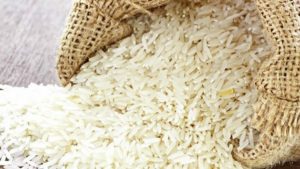India has released its first genome-edited rice varieties:

India has released its first genome-edited rice varieties namely ‘DRR Dhan 100 (Kamala)’ and ‘Pusa DST Rice 1’ aimed at enhancing yields, climate resilience, and resource efficiency without introducing foreign DNA.
- They have been developed by ICAR using advanced CRISPR-Cas9 genome-editing technology. No foreign DNA is introduced, making them comparable to traditionally bred crops.
- DRR Dhan 100 (Kamala) is based on the popular Samba Mahsuri variety. Edited using Site Directed Nuclease 1 (SDN1) technology targeting the Cytokinin Oxidase 2 (CKX2) gene (Gn1a) to improve grain number.
- It results in early maturity (Harvested 15–20 days earlier), drought-tolerant, high nitrogen-use efficiency.
- Pusa DST Rice 1 is based on Maruteru 1010 variety and enhances drought and salt tolerance. Developed through SDN1 genome-editing, it targets the drought and salt tolerance (DST) gene.
- It results in 30.4% higher yield in coastal salinity, 14.66% higher in alkaline soils and 9.67% higher in inland salinity.
- It is a genome-editing technique that introduces precise changes in DNA using enzymes called nucleases.
- SDN-1 introduces small insertions/deletions without using foreign DNA, while SDN-2 uses a template DNA (similar to the host) to introduce specific desired changes.




